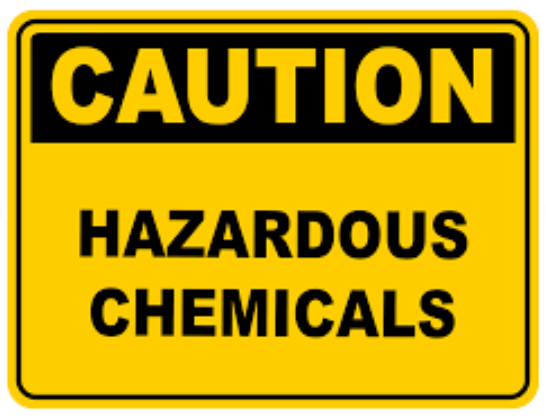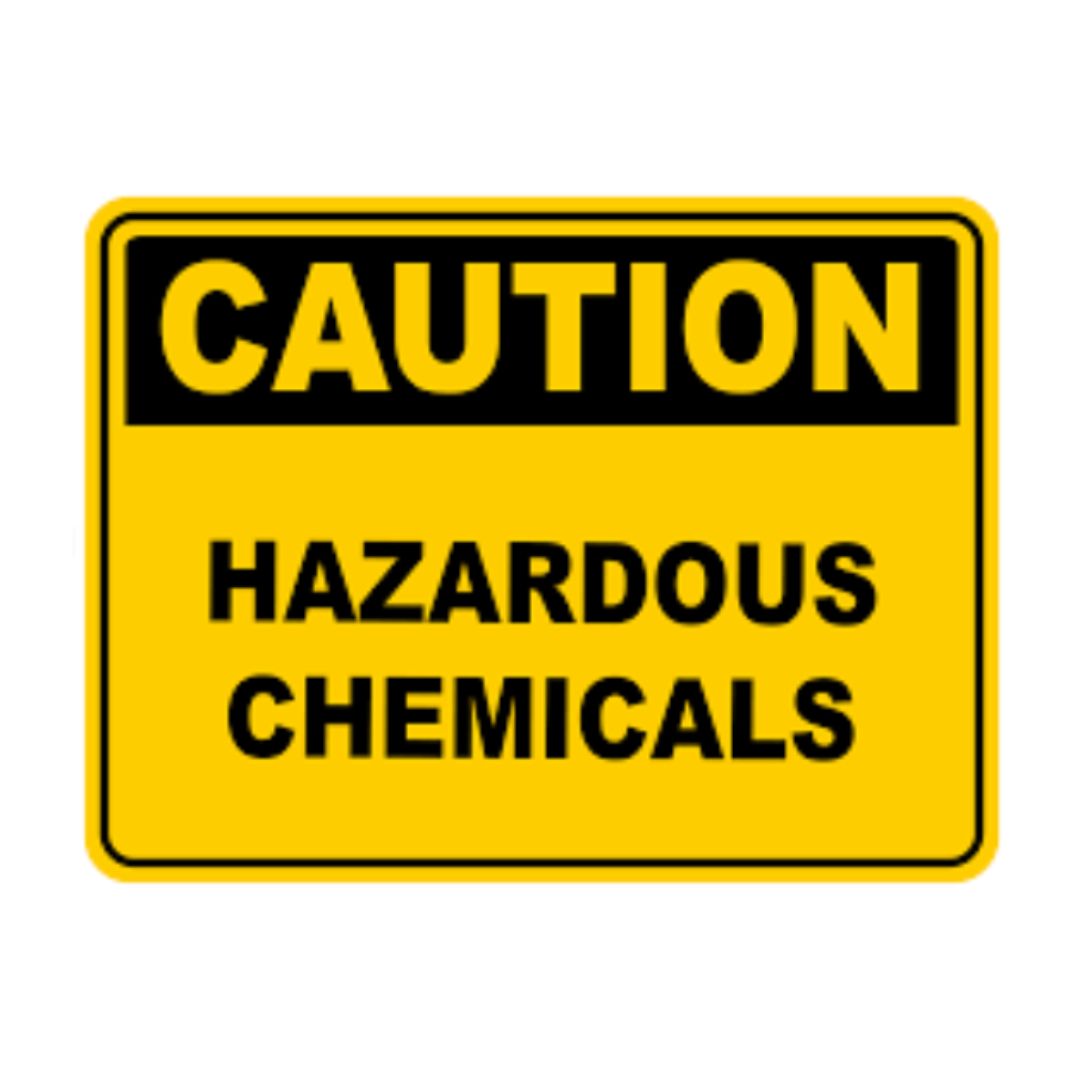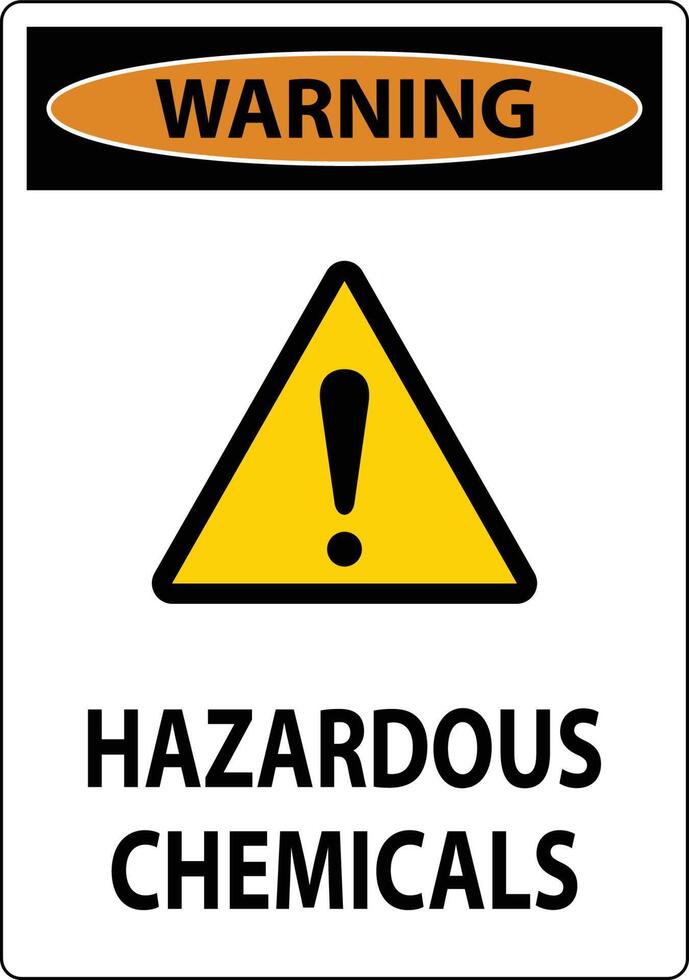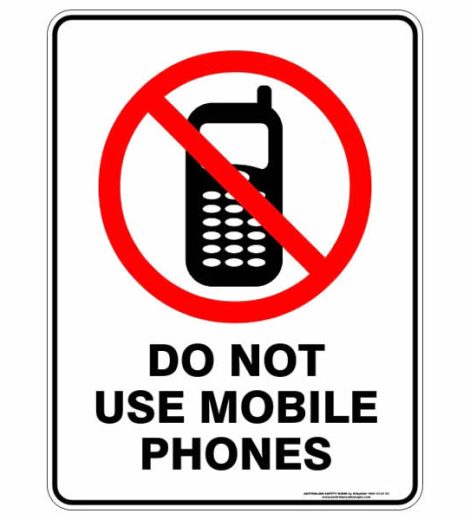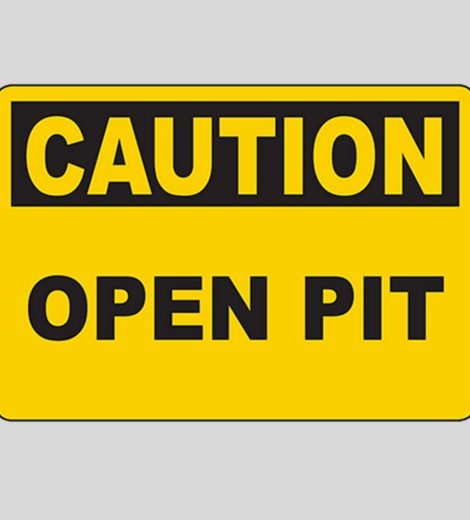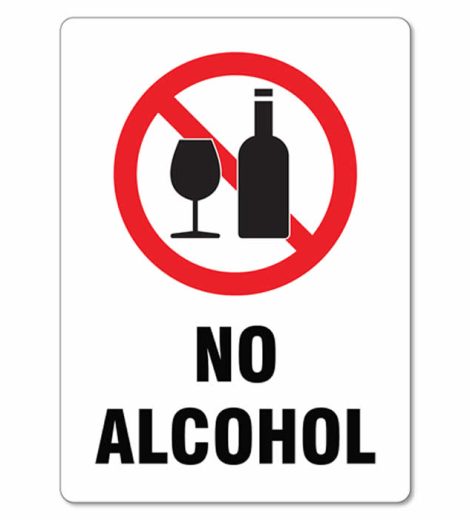Description
Why is a Caution: Hazardous Chemicals Sign Important?
- Prevents Accidents and Health Hazards
Hazardous chemicals can pose risks such as burns, poisoning, respiratory issues, and environmental contamination. Proper signage warns individuals to take necessary precautions. - Ensures Workplace Safety
Industries dealing with chemicals must prioritize safety to protect employees and visitors from exposure to harmful substances. Proper warning signs reduce the likelihood of workplace incidents. - Legal and Regulatory Compliance
Safety organizations such as OSHA (Occupational Safety and Health Administration) and NIOSH (National Institute for Occupational Safety and Health) require workplaces handling hazardous chemicals to display proper warning signs. - Increases Awareness and Preparedness
Employees and visitors need to be aware of potential dangers and safety measures, including the use of Personal Protective Equipment (PPE) such as gloves, masks, and goggles. - Minimizes Liability for Businesses
Displaying clear warning signs helps businesses reduce legal risks and liability in case of accidents related to chemical exposure.
Where Should Caution: Hazardous Chemicals Signs Be Placed?
Proper placement ensures that these signs effectively warn people of potential dangers. Some ideal locations include:
- Chemical storage areas – Cabinets, shelves, and rooms where hazardous chemicals are stored.
- Manufacturing and processing plants – Work areas where chemicals are used in production.
- Laboratories – To alert personnel about dangerous substances in test environments.
- Hospitals and healthcare facilities – Where medical and cleaning chemicals are used.
- Cleaning supply rooms – Especially for businesses handling industrial cleaning products.
- Transport and shipping areas – To warn handlers about hazardous materials in transit.
- Waste disposal sites – Ensuring proper handling of toxic waste materials.
Types of Hazardous Chemical Signs
1. Toxic Chemicals Warning Signs
These signs indicate the presence of substances that can cause poisoning if inhaled, ingested, or absorbed through the skin.
2. Flammable Chemicals Signs
Used in areas where highly flammable substances such as gasoline, alcohol, or acetone are stored or used.
3. Corrosive Material Signs
Warn against chemicals that can cause severe burns or damage to skin and materials, such as acids and alkalis.
4. Gas Cylinder Warning Signs
Essential for facilities handling pressurized gases, indicating the need for proper handling and storage procedures.
5. Explosive Material Signs
Required in industries dealing with volatile chemicals that pose a risk of explosion if mishandled.
6. Biohazard Signs
Used in healthcare and research facilities to warn of biological hazards such as viruses and bacteria.
Design and Material Considerations
1. Material Options
- Aluminum Signs: Durable and weather-resistant for outdoor or industrial use.
- Acrylic Signs: Suitable for indoor environments with a professional appearance.
- Vinyl Stickers: Cost-effective and ideal for temporary applications.
- Photo luminescent Signs: Glow-in-the-dark signs for low-light conditions.
2. Visibility and Readability
- Bold lettering – Clear and easy to read from a distance.
- Bright colors – Yellow, red, and white backgrounds enhance visibility.
- Pictograms – Universal hazard symbols for quick understanding.
3. Durability and Weather Resistance
- Waterproof and UV-resistant materials ensure longevity.
- Scratch-resistant coatings prevent fading over time.
- Reflective surfaces improve visibility in dimly lit areas.
Compliance with Safety Standards
To comply with safety regulations, businesses handling hazardous chemicals must:
- Follow OSHA and ANSI guidelines – Ensure that signs meet proper size, color, and symbol requirements.
- Place signs at eye level – To maximize visibility and ensure that workers and visitors notice them.
- Regularly inspect and replace damaged signs – Faded or broken signs must be replaced to maintain effectiveness.
- Use multilingual signs – Essential in workplaces with diverse employees to ensure clear communication.
Benefits of Choosing Eloquent Signs in Lagos
Eloquent Signs is a trusted supplier of high-quality Caution: Hazardous Chemicals Signs, offering:
- Expert craftsmanship – Precision manufacturing with top-grade materials.
- Customizable designs – Tailored signs to meet industry-specific needs.
- Affordable pricing – Competitive rates for businesses of all sizes.
- Fast delivery – Reliable service within Lagos and beyond.
- Regulatory compliance – Signs designed to meet safety standards.
Conclusion
A Caution: Hazardous Chemicals Sign is a vital safety measure for any workplace dealing with dangerous substances. Ensuring proper placement, design, and compliance with safety standards can significantly reduce risks, protect workers, and enhance overall safety.
For businesses and industries in Lagos looking for high-quality safety signage, Eloquent Signs provides durable, compliant, and customizable solutions. Investing in proper safety signs is a crucial step toward maintaining a safe and legally compliant work environment.

